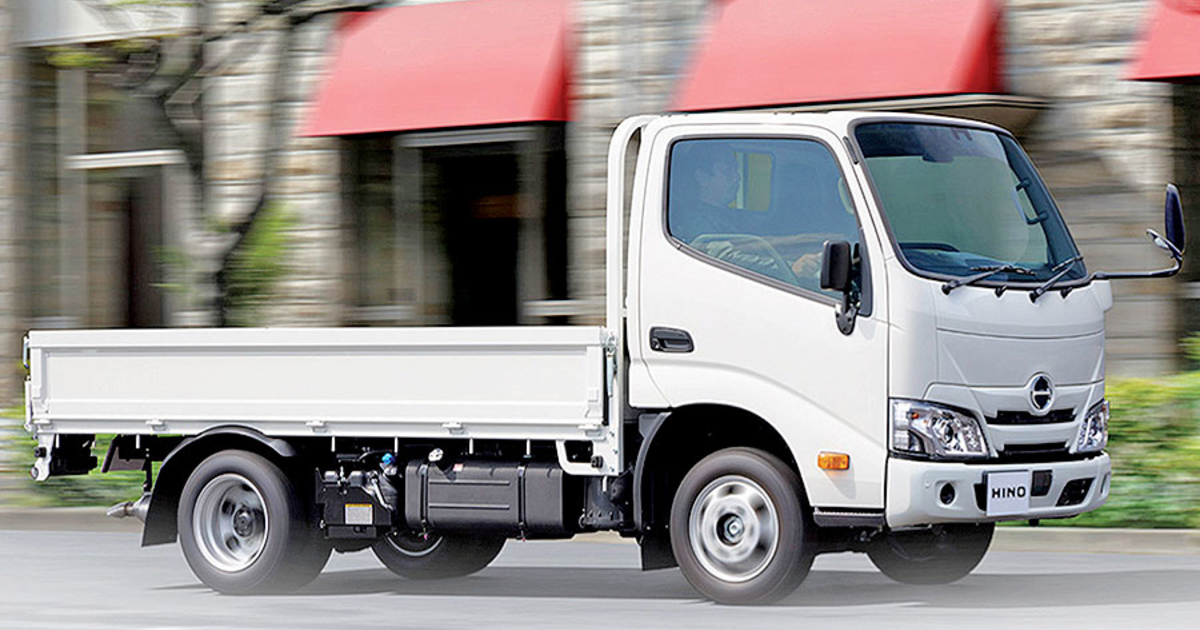
TOKYO — Toyota Motor Corp. and its president, Akio Toyoda, have spent much of the past year fending off criticism that they are dragging their feet on environmentally friendly electric vehicles. Now, a new emissions scandal is blowing up in Toyoda’s backyard.
Emissions and fuel efficiency improprieties have come to light at Hino Motors, Toyota’s truckmaking subsidiary, that date back as far as 2003. Hino employees fudged the tests on engines used in 643,635 vehicles over the years, with 66,817 of the trucks now subject to recall.
The misconduct, which surfaced in March, snowballed last week when Hino said new problems were discovered in the testing of a light-duty engine, after earlier revelations in other powerplants.
The scandal has forced Hino to suspend most of its shipments in Japan.
But the problem is also driving a wedge between Hino and Toyota, the truckmaker’s biggest shareholder with a 50.1 percent stake. Last week, Toyoda issued a stinging rebuke of Hino as the problem festered, while the company cast doubt on the partnership’s value.
“We are extremely disappointed that Hino has once again betrayed the expectations and trust of its stakeholders,” Toyoda said in the rare public reprimand of a partner company. “We will closely watch whether Hino can be reborn as a company worthy of the trust of its stakeholders.”
The world’s largest carmaker suddenly seems to be questioning the merit of a partnership founded when Toyota bought a controlling stake in 2001.
Similar automaker-truckmaker tie-ups have fallen out of vogue around the industry as carmakers focus on their core passenger products. Nissan sold its truck subsidiary to Volvo in 2007. More recently, Volkswagen spun off its truck and bus unit, now known as Traton, and Daimler separated its truck and car units in 2021.
The new conventional wisdom is that carmakers need to jettison the extra baggage of heavy commercial vehicles that find little synergy with the mainstay passenger vehicle lineups.
This is especially true in an era when dollars must be stretched for investment in new technologies such as electrification, and when complex corporate structures are increasingly seen as ponderous.
Volkswagen aimed to raise more than $1 billion for electrification by floating shares in Traton.
Toyota Chief Communications Officer Jun Nagata dismissed speculation that Toyota and Hino are headed for divorce.
But he conceded that the companies don’t mesh as well as once hoped.
Toyota’s loose alliances with Mazda, Subaru and Suzuki, connected only by small symbolic cross-shareholdings, center on a shared ambition to make better cars, he said.
Not so with Hino.
“Frankly, we have been unable to get much done in this relationship,” Nagata said, citing a clash in corporate cultures.
“Compared with Toyota, Hino is lacking in a governance structure. What’s more, this problem has a lot to do with Hino’s corporate culture. The company lacks knowledge about legal compliance,” he said.
“At the end of the day, we have concluded there was not much synergy.”
After Toyota made its public criticisms, things got worse.
Hino was summarily expelled from a newly created, Japan-wide commercial vehicle consortium of Toyota-affiliated companies to speed the industry’s shift to electrification.
Toyota said Hino’s “misconduct” was incompatible with the group’s “aspiration and goals.”
The Commercial Japan Partnership Technologies Corp., or CJPT, was created in 2021 to help transition Japanese commercial vehicle makers for the shift to battery-electric, hydrogen fuel cell and self-driving technologies.
It initially brought together Toyota, Hino and Isuzu, with Toyota agreeing to take a 4.6 percent stake in Isuzu as part of the tie-up. Toyota already held a 50.1 percent stake in Hino.
Suzuki and Daihatsu later joined CJPT to develop electric minivehicles for commercial use.
Hino’s scandal is especially embarrassing for Toyota as critics ding the automaker and its CEO for sticking to an electric-gasoline hybrid vehicle strategy as the industry rushes into pure EVs.
The revelations at Hino echo a spate of final inspection misconduct at other Japanese companies in 2017 and 2018 that tripped up rivals Nissan and Subaru, among others.
At the time, Toyota was one of the few Japanese automakers untouched by various oversights flagged by regulators.
Last week’s development at Hino was all the more aggravating for Toyota because it came to light during an on-site inspection by Japan’s transportation ministry — not by Hino itself.
In filing for emissions certification, Hino measured emissions only once at a specified measurement point when it should have measured at least twice.
This month, a group of U.S. plaintiffs sued Hino and Toyota in U.S. District Court in Florida, seeking damages on behalf of those who purchased or leased Hino trucks during the 2004 to 2021 model years.
In addition to making large trucks and buses such as the Hino 700 Series heavy-duty truck, Hino assembles the Toyota Land Cruiser Prado and formerly made the popular Toyota FJ Cruiser, both with Toyota engines.
The emissions flap will be a big test for Hino’s new president, Satoshi Ogiso, 61.
Ogiso is a Toyota veteran who once led the company’s prestigious portfolio of Prius hybrid cars. A well-respected engineer, Ogiso was dispatched to lead Toyota Group supplier Advics, before returning to Toyota to head commercial vehicles. Ogiso took the helm of Hino in June 2021 to lead the truckmaker into an era of carbon neutrality.
Ogiso was in the job for less than a year when the scandal blew up.
“Unless Hino employees are resolved to change their corporate culture from deep down,” Nagata said, “things will be quite difficult, no matter what kind of turnaround plan Hino draws up.”